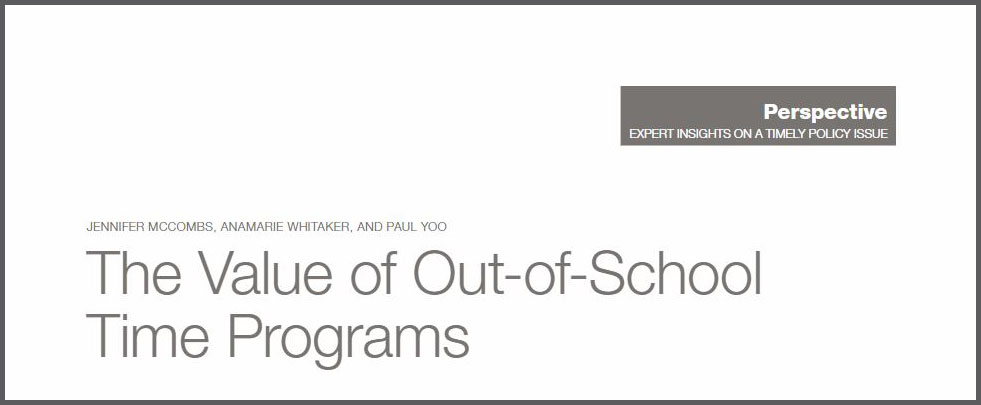 |
Last month, we saw afterschool programs across the country open their doors to host Lights On Afterschool events, providing a firsthand look at the broad array of fun, enriching, and engaging activities students take part in at the program and the vital role programs play in their community. A newly-released research report from RAND is a fantastic complement to Lights On Afterschool, offering a research-based look at The Value of Out-of-School Time Programs.
The principal takeaway from the report, which made possible in part by The Wallace Foundation, is that there are measurable benefits to students and families when participating in afterschool and summer learning programs — but the quality and intentionality of the program, as well as a student’s regular participation in the program, influences those benefits.
Also of note in the report is that it calls attention to the nuanced issue of what is and is not measured in afterschool and summer learning programs when evaluating a program’s success. The authors find that some of the key benefits of afterschool (such as providing students with new and differing learning experiences, helping close the opportunity gap, and supporting parents) are rarely, if ever, measured.
Additionally, when the authors examine the characteristics that influence the degree to which a program has an effect, a line of reasoning arises: drawing a distinction between measuring if a program produces an impact, and whether the program evaluated is intentionally designed to produce such an impact. All programs do not have the same goals and same focus, and it stands to reason that all programs should not be measured by the same criteria. For example, if a program does not spend time or content dedicated to building students’ problem solving and teamwork skills, should one expect to see significant effects on students’ overall social and emotional skills? The researchers explain, “From our review, we find programs tend to be evaluated without sufficient attention to the activities provided or the quality of the content and to be judged by a common metric … When evaluation outcomes are not aligned with program content, other outcomes important for youth development and family well-being are not examined, which does not provide a complete picture of the potential benefits of OST programs.”
Based on their research, recommendations from the authors include:
- When making funding decisions, consider all of the benefits that afterschool and summer learning programs provide. The authors point to the critical role public investment plays in increasing the availability and quality of programs for students, in particular students from low-income families.
- Incentivize and support intentional, high-quality programs. There is a link between high program quality and improved student outcomes, and policymakers and funders can help to provide the resources that help afterschool and summer learning programs continuously improve their design, programming, and quality.
- Work to capture and assess the range of benefits programs offer. While common assessment metrics for program evaluations include test scores and behavior in class, policymakers, funders, and researchers give short shrift to programs if they do not also capture their impact on the opportunity gap, the benefits of providing students an array of learning experiences, and the supports programs offer to parents of participants.
- Align the outcomes measures with program content. Funders should urge researchers to design evaluations guided by a program’s activities and the quality of its content, rather than a common metric unaligned with the program.
This report underscores why public investment in quality afterschool and summer learning programs is crucial. Just take a look at the 8,000 events across the U.S. celebrating Lights On Afterschool to see afterschool in action and get a small glimpse into what afterschool means to students, families and communities.
Comments are closed.